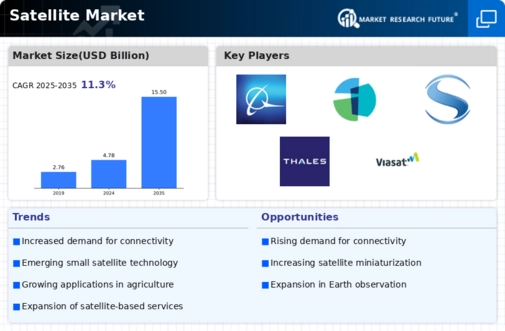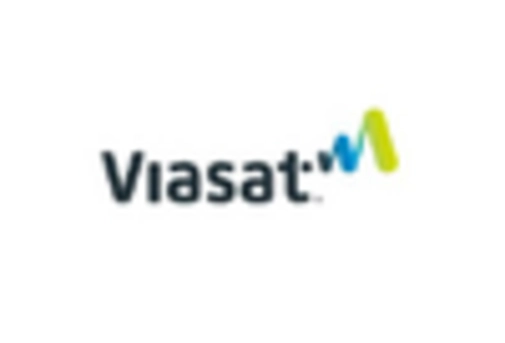Market Growth Projections
The Global Satellite Industry is projected to experience substantial growth over the coming years. With a market value anticipated to reach 4.78 USD Billion in 2024 and further expanding to 15.5 USD Billion by 2035, the industry is on a promising trajectory. The compound annual growth rate (CAGR) of 11.3% from 2025 to 2035 underscores the increasing reliance on satellite technology across various sectors. This growth is indicative of the expanding applications of satellites in communication, Earth observation, and scientific research, reflecting the dynamic nature of the Global Satellite Industry.
Advancements in Satellite Technology
Technological advancements significantly influence the Global Satellite Industry, fostering innovation and efficiency. The development of small satellites, or CubeSats, has revolutionized the market by reducing costs and enabling more frequent launches. These advancements allow for diverse applications, including Earth observation and scientific research. As a result, the market is expected to expand, with projections indicating a growth to 15.5 USD Billion by 2035. Furthermore, enhanced propulsion systems and miniaturization of components contribute to improved satellite performance. This technological evolution not only attracts investment but also enhances the overall capabilities of the Global Satellite Industry.
Emerging Applications in Various Sectors
Emerging applications across various sectors are reshaping the Global Satellite Industry. Industries such as agriculture, transportation, and telecommunications are increasingly leveraging satellite technology for enhanced operational efficiency. For instance, precision agriculture utilizes satellite imagery to optimize crop yields, while logistics companies employ satellite tracking for real-time shipment monitoring. This diversification of applications not only broadens the market scope but also attracts new players and investments. As these sectors continue to adopt satellite solutions, the Global Satellite Industry is likely to experience robust growth, reflecting the versatility and adaptability of satellite technology.
Government Investments in Space Programs
Government investments in space programs serve as a critical driver for the Global Satellite Industry. Countries worldwide are increasingly recognizing the strategic importance of satellite technology for national security, communication, and scientific research. For example, the United States and European nations are allocating substantial budgets to develop and launch new satellites. These investments not only stimulate market growth but also foster international collaboration in satellite technology. As governments prioritize space exploration and satellite infrastructure, the Global Satellite Industry is likely to witness sustained growth, supported by public funding and policy initiatives.
Increasing Demand for Satellite Communication
The Global Satellite Industry experiences a notable surge in demand for satellite communication services. As businesses and governments increasingly rely on satellite technology for reliable communication, the market is projected to reach 4.78 USD Billion in 2024. This growth is driven by the need for enhanced connectivity in remote areas and the expansion of Internet of Things (IoT) applications. For instance, satellite communication plays a crucial role in sectors such as agriculture, where precision farming relies on real-time data transmission. The Global Satellite Industry is thus positioned to benefit from this escalating demand, indicating a robust trajectory for future growth.
Growing Demand for Earth Observation Satellites
The Global Satellite Industry is significantly impacted by the growing demand for Earth observation satellites. These satellites provide invaluable data for various applications, including climate monitoring, disaster management, and urban planning. The increasing awareness of environmental issues and the need for sustainable development drive this demand. As a result, the market is poised for substantial growth, with a projected compound annual growth rate (CAGR) of 11.3% from 2025 to 2035. Governments and private entities are investing in advanced Earth observation technologies, further solidifying the role of these satellites in addressing global challenges, thus enhancing the Global Satellite Industry.

















Leave a Comment